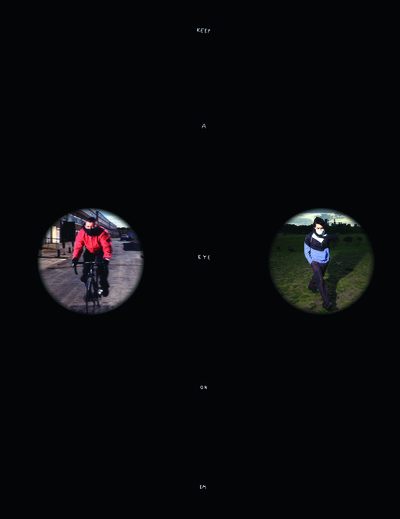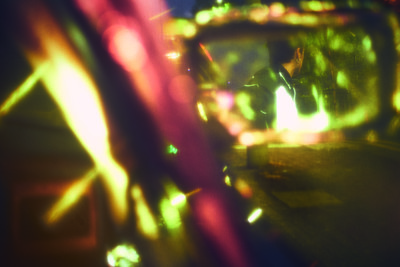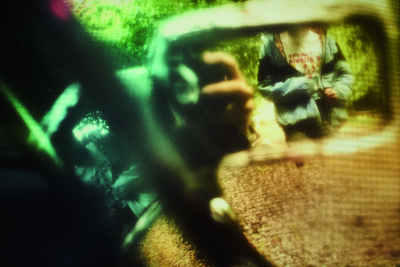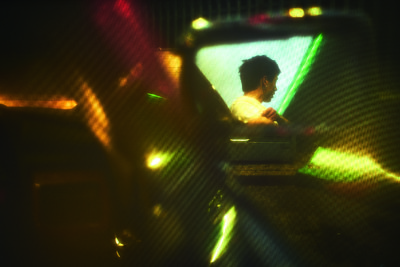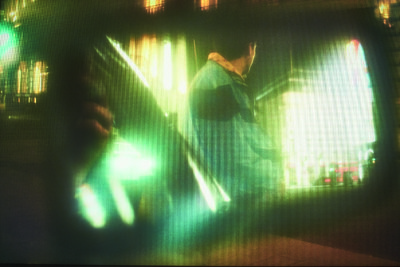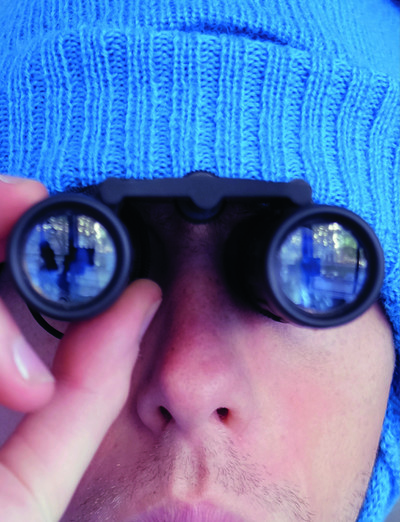In early April, we sent the following request to 17 leading art directors working in the fashion industry.
We’d love for you to conceptualize and deliver a fashion portfolio with your available means and from your current location. You would be entirely free to work with any partners, and to select any brand(s) you would like to feature in the portfolio. The exercise is one that innately addresses the current restrictions on collaborative work.
Just prior to sending out that message, we had asked ourselves a question that remains as bewildering today as it was when fashion’s capitals were first entering lockdown: in a world of Covid-19 restrictions, how can you create fashion imagery that often requires in-person collaboration, international travel, shipping clothes, and an often significant budget?
We decided to let the industry’s art directors work that question out for us. In doing so, commissioning a collective body of work that feels both adapted to this uniquely curious moment and which acts as a mirror to its creators. Each of the portfolios presented over the following pages reveals the personality, idiosyncrasies, background, working processes, address book, and creative impulses of the participating art director(s).
Interview by Thomas Lenthal
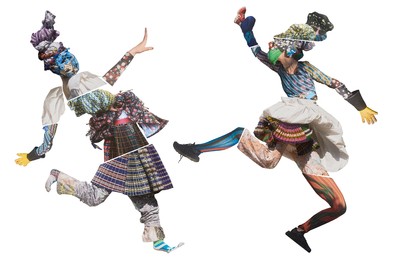
In early April, we sent the following request to 17 leading art directors working in the fashion industry.
We’d love for you to conceptualize and deliver a fashion portfolio with your available means and from your current location. You would be entirely free to work with any partners, and to select any brand(s) you would like to feature in the portfolio. The exercise is one that innately addresses the current restrictions on collaborative work.
Just prior to sending out that message, we had asked ourselves a question that remains as bewildering today as it was when fashion’s capitals were first entering lockdown: in a world of Covid-19 restrictions, how can you create fashion imagery that often requires in-person collaboration, international travel, shipping clothes, and an often significant budget?
We decided to let the industry’s art directors work that question out for us. In doing so, commissioning a collective body of work that feels both adapted to this uniquely curious moment and which acts as a mirror to its creators. Each of the portfolios presented over the following pages reveals the personality, idiosyncrasies, background, working processes, address book, and creative impulses of the participating art director(s).
‘I look back at the images in the
early issues of The Face and I feel
like I know that person.’
A conversation with Jamie Reid,
14 May 2020.
Thomas Lenthal: Can you start by talking me through your portfolio?
Jamie Reid: Absolutely. Collaboration is fundamental and inspiring to me – the people I surround myself with, be they friends, colleagues, artists, designers,
photographers, image-makers in general. With this quarantine and isolation, and people being at home, I wanted to form a string of dialogues, a celebration of new and up-and-coming designers and creatives who I admire. I also wanted to do a light-hearted exercise in creating imagery around the restrictions. Who I brought in to collaborate on these projects was also quite considered. I was interested to see how we would tackle this between us, and we’ve managed to take a very different approach to each spread and image in the portfolio.
Thomas: You ended up collaborating with five different photographers.
Jamie: Some of the teams I already work with and support, and others were new. Some of the projects are a continuation of the kind of language and collaboration we are already in the process of. For instance, having just worked on a film project with Jordan Hemingway and Mowalola, I knew Jordan would be
chomping at the bit to create something. We decided that we wanted to shoot Mowalowa herself, because she’s an amazing creative and has got this really strong identity. I wanted to create this mirror image of her kissing herself, as a kind of gesture towards self-love and self-care. We did a FaceTime shoot, did some post-production on that and then re-photographed the FaceTime imagery. I thought that the more reworking and stages in the process, the better.
Thomas: Were you the only one privy to what the other ones had done?
Jamie: Yes, but everyone who worked on this project was already close, so they might have had some kind of indication. I wanted to create something uplifting
and interesting and fun that speaks about this time. I also wanted to make it London-centric – because that’s where I’m from, and it inspires me all the time – and about the community of people I work with. I created a mood board and a loose brief or idea for each team, and we rolled with that as we went. It was a very close conversation, but it wasn’t rushed. We approached it with a clear headspace. Everyone has a lot to think about and deal with at the moment, and I wanted to make sure that everyone felt comfortable and inspired by what we were trying to create.
Thomas: Can restriction can be useful for creative work?
Jamie: I’m quite used to working with restrictions. There’s always some kind of limitation with a project. Restrictions can only make you more creative; it’s about finding creative solutions to a problem. It can keep you on your toes.
Thomas: What’s a good fashion image to you?
Jamie: I look for spirit and soul in an image. It can manifest itself visually in different ways, but I have to see that some feeling and heart have gone into it.
Thomas: How do you recognize the emotional truthfulness of an image?
Jamie: As an image-maker, you create a narrative and project it onto a scenario and a character. You build a character that somebody then interprets. That can spark an emotion that you didn’t intend. Look at David Sims’ street casting; what he sees in people and how he shoots them is so inspiring. See the same people through the lens of a different photographer, and it’s worlds apart. I look back at the images in the early issues of The Face and I feel like I know that person. That’s really special.
Thomas: The human factor is your thing?
Jamie: I think so. I enjoy fantasy, but I am more drawn towards imagery that resonates with me personally. I have a wide palette of interests, especially in art and photography, but I probably lean more towards documentary or work that feels like it’s capturing a moment, a person or a time. My bookshelf is probably 70% Araki or photography of that area; a lot of street photography.
‘I lean more towards work that feels like it’s capturing a moment, a person or a time. My bookshelf is 70% Araki or street photography.’
Thomas: Was there a defining image, reference, person or moment from your teenage years that now seems instrumental in your career in fashion, and art direction, in particular?
Jamie: When I was growing up, I always thought I wanted to be an engineer or a mechanic, which is what my dad does. Then I had a bit of a crisis, where I really didn’t know what I wanted to do, and I used to spend all my time at the skate park. I studied graphic design at college, but I didn’t enjoy it much at first. One of my tutors showed me all this Stanley Donwood artwork for Radiohead albums. I really didn’t like it; I think he’s a really good image-maker, but at the time I was, like, ‘I don’t listen to or appreciate Radiohead, and I don’t get the imagery.’ I just couldn’t see the connection. Then I was reading up on Black Flag, through my interest in punk music and BMX. I bought this photobook by Glen E. Friedman, with his photographs of Black Flag on the road, and all these hip-hop artists and amazing musicians. Really cool imagery. I found that so inspiring, the opposite of how I felt about that Stanley Donwood Radiohead album. I love the music of Black Flag; I could see how the music made me feel, and how the music might have made these image-makers feel, and I got that connection. It clicked with me. From there, I took a course in photography and learned how to do some darkroom printing. I wanted to get that really grainy black- and-white texture of all this hardcore gig photography. I almost failed my other college courses, because all I did was focus on photography. I used to just go into the darkroom after hours and work. It was fun for me to print a photo and then apply a design texture to it, and vice versa. Through that, I discovered Nan Goldin and Gregory Crewdson’s work, two different worlds. All the effort and production that went into a Crewdson picture – immaculate lighting, rain showers, a crane – compared to Goldin’s pictures in the back of a taxi. It blew my mind that both these things could inspire me, and they were at such different ends of the spectrum.
Thomas: Which person in this industry, living or dead, do you most admire?
Jamie: In college, we had a lecture by [4AD designer] Vaughan Oliver, and it was amazing timing because I had just gotten into the Pixies. His lecture was so inspiring; it was really cool seeing how much texture and how many layers went into that work. It was special having a conversation with him and funny, too, because he had a bit of a dig at Peter Saville. To me they’re both equal in this field – they made the best album sleeves almost ever, but the music and their aesthetics are so different.
Thomas: What does success look like?
Jamie: I feel successful when I feel inspired or happy, or when I get some emotion out of seeing something. Working on a piece I love, seeing it released, sparks a kind of joy within me. I enjoy collaborations, group conversations, when your excitement is growing and growing. That’s when I feel successful.
Thomas: Describe a professional disappointment and what it taught you.
Jamie: One disappointment was not getting an interview at the Royal College of Art. Neville Brody had just taken over the course, and that was a big reason why I wanted to be there. I was gutted. I was thinking, ‘What am I going to do?’ I was unsure. At that time I was freelancing at a prestigious design studio, I was designing a publication for a great publisher and collector, after which I contacted POP magazine, which is where I started working in fashion. I had decided that I wanted to go to the Royal College of Art whatever happened, but looking back, it wasn’t the right thing for me. The exposure to the industry was more fundamental
than more studying would have been.
Thomas: Do you think it’s possible to be unique today? Does that even matter?
Jamie: We live in a culture that’s so aware of the past; there’s an encyclopedia of the past available to everyone, and they can choose what to look at. People
pick up all these different ideas and kind of create something new for themselves by borrowing from all these little bits. That also applies to image-making. You
can throw in all these different elements and even if the ingredients already exist, it’s still possible to create a unique image. If you put enough of your personality, heart, emotion and effort into the work, it will be unique. Maybe what you thought was unique once isn’t now, or what you didn’t, could be unique in the future. What might be unique to me may not be unique to you.
Thomas: Are you interested in going back to pre-Covid-19 work processes?
Jamie: I’m undecided. I’ve benefited from slowing down and taking a little more time with ideas. There’s this Cy Twombly quote: ‘When I work, I work very fast, but preparing to work can take any amount of time.’ That’s how I’m working at the moment: taking time for myself, putting my thoughts on paper and trying to create something. I hope that can continue.
Thomas: You’ve rediscovered the beauty of pondering.
